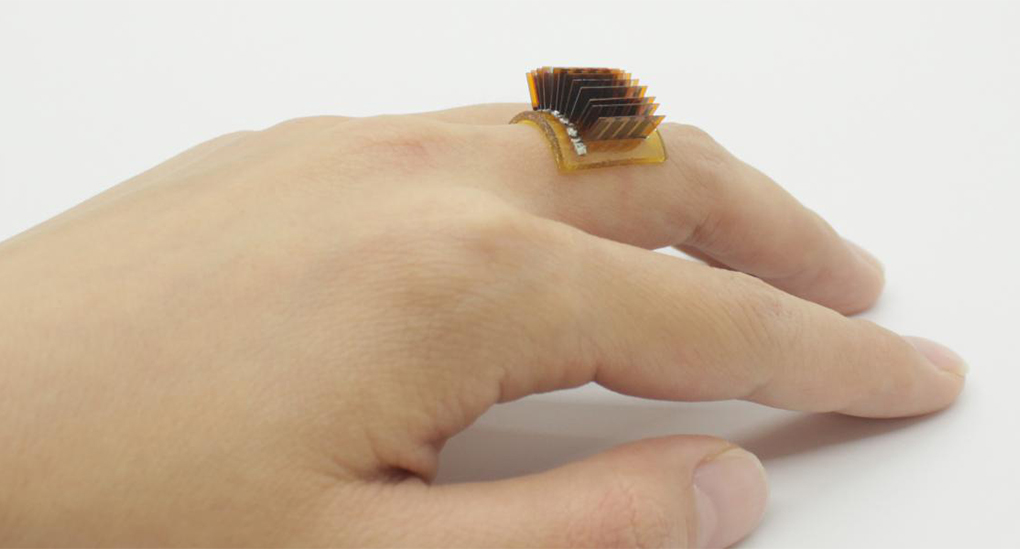Researchers at the University of Colorado Boulder have developed a new wearable device that harvests energy from the wearer’s own body heat.
Using an elastic material, the device can be worn like a ring, bracelet or any accessory that makes direct contact with your skin. It employs thermoelectric generators to convert the body’s internal temperature into electricity.
The low-cost wearable device essentially treats the human body as a biological battery.
“In the future, we want to be able to power your wearable electronics without having to include a battery,” said Jianliang Xiao, senior author of the new paper and an associate professor in the Paul M. Rady Department of Mechanical Engineering at CU Boulder.
Xiao’s previous experiments with wearable devices include those that look and behave like human skin, but they require an external power source to work.
The current project involves sticking a series of thin thermoelectric chips into a base made out of a stretchy material called polyimine, then connecting them all with liquid metal wires.
“Our design makes the whole system stretchable without introducing much strain to the thermoelectric material, which can be really brittle,” Xiao said.
“The thermoelectric generators are in close contact with the human body, and they can use the heat that would normally be dissipated into the environment.”
The team estimates that a person taking a brisk walk using the wristband-sized device can generate about 5 volts of electricity – more than many watch batteries can produce.
The customisable design also allows more blocks of thermoelectric generators to be added, boosting the power.
“What I can do is combine these smaller units to get a bigger unit,” Xiao said. “It’s like putting together a bunch of small Lego pieces to make a large structure. It gives you a lot of options for customisation.”
Unlike the thermoelectric wearable devices that other scientists have experimented with, the group’s innovation is fully recyclable and has the ability to heal itself when damaged.
The new devices can mimic the resilient qualities of biological tissue. For example, a torn device can be repaired simply by pinching together the broken ends. They will seal back up in a few minutes.
The parts of the device are also reusable. Immersing the device into a special solution will dissolve the polyimine base and separate out the electronic components such that each individual part can be reused.
“We’re trying to make our devices as cheap and reliable as possible, while also having as close to zero impact on the environment as possible,” Xiao says.
Xiao believes that his group’s devices could appear on the market in five to 10 years. Co-authors on the new paper include researchers from China’s Harbin Institute of Technology, Southeast University, Zhejiang University, Tongji University and Huazhong University of Science and Technology.



Leave a Reply